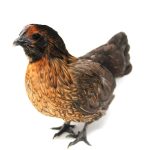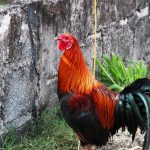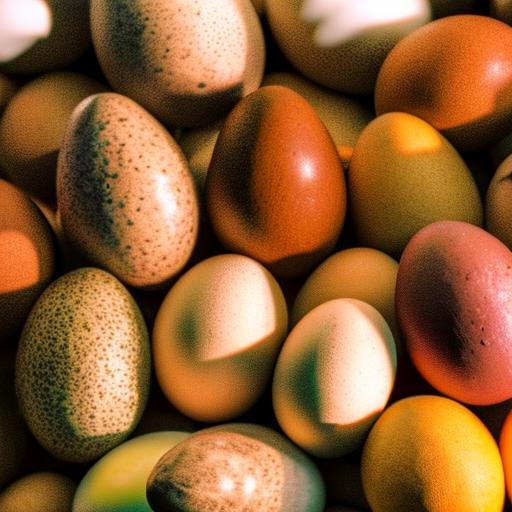Raising laying chicken breeds is a popular activity for hobbyists and commercial farmers alike. These breeds are specifically developed for their high egg production capabilities, making them valuable assets in poultry operations. Laying chickens are known for their consistent egg output, resilience, and ability to adapt to various climates and environments.
A wide range of laying chicken breeds is available for those interested in starting a small backyard flock or expanding commercial egg production. Laying chicken breeds exhibit diverse physical characteristics, including varying shapes, sizes, and colors. Each breed also possesses unique personality traits and egg-laying capacities.
Popular breeds include the Rhode Island Red and the Leghorn, among many others. The selection of breeds caters to different farmer needs and preferences. This article will examine several popular laying chicken breeds, detailing their characteristics and traits.
It will provide guidance on selecting the appropriate breed based on specific requirements. Additionally, the article will cover the care and maintenance of laying chicken breeds and offer strategies for maximizing egg production to ensure a successful and sustainable poultry operation.
Table of Contents
- 1 Popular Laying Chicken Breeds
- 2 Characteristics and Traits of Laying Chicken Breeds
- 3 Choosing the Right Laying Chicken Breed for Your Needs
- 4 Care and Maintenance of Laying Chicken Breeds
- 5 Maximizing Egg Production with Laying Chicken Breeds
- 6 The Benefits of Raising Laying Chicken Breeds
- 7 FAQs
Key Takeaways
- Laying chicken breeds are specifically bred for their ability to produce a high quantity of eggs.
- Popular laying chicken breeds include the Rhode Island Red, Leghorn, and Sussex.
- Laying chicken breeds are known for their docile nature, hardiness, and adaptability to various climates.
- When choosing a laying chicken breed, consider factors such as egg color, size, and frequency, as well as the bird’s temperament and space requirements.
- To maximize egg production, provide laying chicken breeds with a balanced diet, proper housing, and regular health checks.
Popular Laying Chicken Breeds
Popular Laying Chicken Breeds
The Rhode Island Red is one of the most popular laying chicken breeds, known for its excellent egg production and hardiness. These chickens are known for their deep red plumage and friendly disposition, making them a favorite among backyard flock owners.
Rhode Island Red Characteristics
Rhode Island Reds are reliable layers, producing large brown eggs consistently throughout the year. They are also known for their adaptability to various climates, making them an excellent choice for both small-scale and commercial egg production.
Leghorn: A Prolific Laying Breed
The Leghorn is another popular laying chicken breed, prized for its prolific egg-laying abilities. These chickens are known for their elegant appearance, with sleek white feathers and bright red combs. Leghorns are excellent layers of large white eggs, making them a top choice for commercial egg producers. They are also known for their active and independent nature, thriving in free-range environments where they can forage and explore.
Australorp: A Dual-Purpose Breed
The Australorp is a dual-purpose breed known for its exceptional egg-laying abilities as well as its meat quality. These chickens are known for their glossy black feathers and friendly temperament. Australorps are excellent layers of large brown eggs, making them a valuable addition to any egg production operation. They are also known for their calm and docile nature, making them easy to handle and care for.
Characteristics and Traits of Laying Chicken Breeds
Laying chicken breeds are specifically bred for their ability to produce a high volume of eggs, making them a valuable asset to any poultry operation. These breeds are known for their consistent egg production, hardiness, and adaptability to various climates and environments. Laying chicken breeds come in all shapes, sizes, and colors, and each breed has its own distinct personality and egg-laying capabilities.
One of the key characteristics of laying chicken breeds is their egg-laying abilities. These breeds are known for their high egg production, with some breeds capable of laying over 300 eggs per year. The size and color of the eggs can vary depending on the breed, with some laying large brown eggs while others lay smaller white eggs.
Laying chicken breeds are also known for their hardiness and adaptability to various climates and environments. They are able to thrive in both free-range and confined housing systems, making them suitable for a wide range of poultry operations. In addition to their egg-laying capabilities, laying chicken breeds also have distinct personalities and temperaments.
Some breeds are known for their friendly and docile nature, making them easy to handle and care for, while others are more independent and active. Understanding the characteristics and traits of different laying chicken breeds is essential when choosing the right breed for your specific needs and preferences.
Choosing the Right Laying Chicken Breed for Your Needs
When choosing the right laying chicken breed for your needs, there are several factors to consider, including egg production, temperament, climate adaptability, and space requirements. It’s important to assess your goals and resources before selecting a breed to ensure that it aligns with your specific needs and preferences. If you are looking for a high egg production breed for commercial purposes, then breeds like the Leghorn or Rhode Island Red may be suitable choices due to their prolific egg-laying abilities.
These breeds are known for their consistent egg production and adaptability to various climates, making them ideal for commercial egg production operations. On the other hand, if you are looking for a friendly and docile breed for a backyard flock, then breeds like the Australorp or Orpington may be more suitable choices. These breeds are known for their calm temperament and easy-going nature, making them great choices for small-scale poultry operations.
It’s also important to consider the climate and environment in which you will be raising your chickens. Some breeds are more adaptable to cold climates, while others thrive in warmer environments. Understanding the climate adaptability of different laying chicken breeds is essential when choosing the right breed for your specific location.
Care and Maintenance of Laying Chicken Breeds
Proper care and maintenance are essential for ensuring the health and well-being of laying chicken breeds. This includes providing a suitable housing environment, balanced nutrition, regular health checks, and adequate space for exercise and exploration. When it comes to housing, laying chicken breeds require a clean and well-ventilated coop that provides protection from predators and the elements.
The coop should also have nesting boxes where the hens can lay their eggs in a comfortable and secure environment. Nutrition is also an important aspect of caring for laying chicken breeds. A balanced diet that includes a mix of grains, protein, vitamins, and minerals is essential for supporting optimal egg production and overall health.
It’s important to provide access to fresh water at all times as well as regular access to outdoor areas where the chickens can forage and exercise. Regular health checks are essential for monitoring the well-being of laying chicken breeds. This includes checking for signs of illness or injury, as well as providing vaccinations and deworming treatments as needed.
It’s also important to practice good biosecurity measures to prevent the spread of diseases within the flock. Providing adequate space for exercise and exploration is also important for maintaining the physical and mental well-being of laying chicken breeds. This includes providing access to outdoor areas where the chickens can roam, scratch, dust bathe, and engage in natural behaviors.
Maximizing Egg Production with Laying Chicken Breeds

Nutrition for Optimal Egg Production
One key factor in maximizing egg production is providing a balanced diet that meets the nutritional needs of laying hens. This includes providing a high-quality layer feed that is specifically formulated to support optimal egg production. Layer feeds typically contain higher levels of protein, calcium, vitamins, and minerals that are essential for supporting healthy egg development.
Environmental Conditions for Laying Hens
In addition to providing a balanced diet, it’s important to ensure that laying hens have access to clean water at all times. Dehydration can negatively impact egg production, so it’s essential to provide fresh water that is free from contaminants. Another important factor in maximizing egg production is providing a suitable housing environment that supports the natural behaviors of laying hens. This includes providing comfortable nesting boxes where hens can lay their eggs in a secure environment as well as access to outdoor areas where they can engage in natural behaviors such as scratching, dust bathing, and foraging.
Health Checks for Maximum Egg Production
Regular health checks are also essential for maximizing egg production. Monitoring the overall health and well-being of laying hens can help identify any potential issues that may impact egg production. This includes checking for signs of illness or injury as well as providing vaccinations and deworming treatments as needed.
The Benefits of Raising Laying Chicken Breeds
Raising laying chicken breeds offers a wide range of benefits for both hobbyists and commercial farmers alike. These breeds are specifically bred for their ability to produce a high volume of eggs, making them a valuable asset to any poultry operation. Whether you are looking to start a small backyard flock or expand your commercial egg production, there is a laying chicken breed to suit every farmer’s needs and preferences.
In addition to their prolific egg-laying abilities, laying chicken breeds are also known for their hardiness, adaptability to various climates, and distinct personalities. From the friendly Rhode Island Red to the elegant Leghorn, there is a laying chicken breed to suit every farmer’s needs and preferences. By understanding the characteristics and traits of different laying chicken breeds as well as implementing proper care and management practices, farmers can maximize egg production while ensuring the health and well-being of their flocks.
Whether you are looking to raise chickens for personal consumption or commercial sale, raising laying chicken breeds can be a rewarding and fulfilling experience that offers a consistent supply of high-quality eggs for years to come.
If you’re considering raising laying chickens, you may also be interested in turning a shed into a chicken coop. This article from Poultry Wizard provides helpful tips and ideas for transforming a shed into a comfortable and functional space for your chickens. Whether you’re looking for large chicken coop ideas or considering a specific coop like the Producers Pride Sentinel Chicken Coop, this article offers valuable insights for creating the perfect home for your laying hens. (source)
FAQs
What are laying chicken breeds?
Laying chicken breeds are specifically bred for their ability to produce a high number of eggs. These breeds are popular among backyard and commercial egg producers.
What are some popular laying chicken breeds?
Some popular laying chicken breeds include the Rhode Island Red, Leghorn, Sussex, Plymouth Rock, and Orpington. These breeds are known for their consistent egg production and hardiness.
What factors should be considered when choosing a laying chicken breed?
When choosing a laying chicken breed, factors such as climate, space availability, egg color preference, and temperament should be considered. It’s important to select a breed that is well-suited to the specific environment and needs of the poultry operation.
How many eggs can a laying chicken breed produce?
The number of eggs a laying chicken breed can produce varies depending on factors such as genetics, diet, and environmental conditions. On average, a laying hen can produce 250-300 eggs per year.
What are the characteristics of a good laying chicken breed?
Good laying chicken breeds are known for their high egg production, adaptability to various climates, and overall hardiness. They should also have a calm and friendly temperament, making them easier to handle and manage.
Meet Walter, the feathered-friend fanatic of Florida! Nestled in the sunshine state, Walter struts through life with his feathered companions, clucking his way to happiness. With a coop that’s fancier than a five-star hotel, he’s the Don Juan of the chicken world. When he’s not teaching his hens to do the cha-cha, you’ll find him in a heated debate with his prized rooster, Sir Clucks-a-Lot. Walter’s poultry passion is no yolk; he’s the sunny-side-up guy you never knew you needed in your flock of friends!







